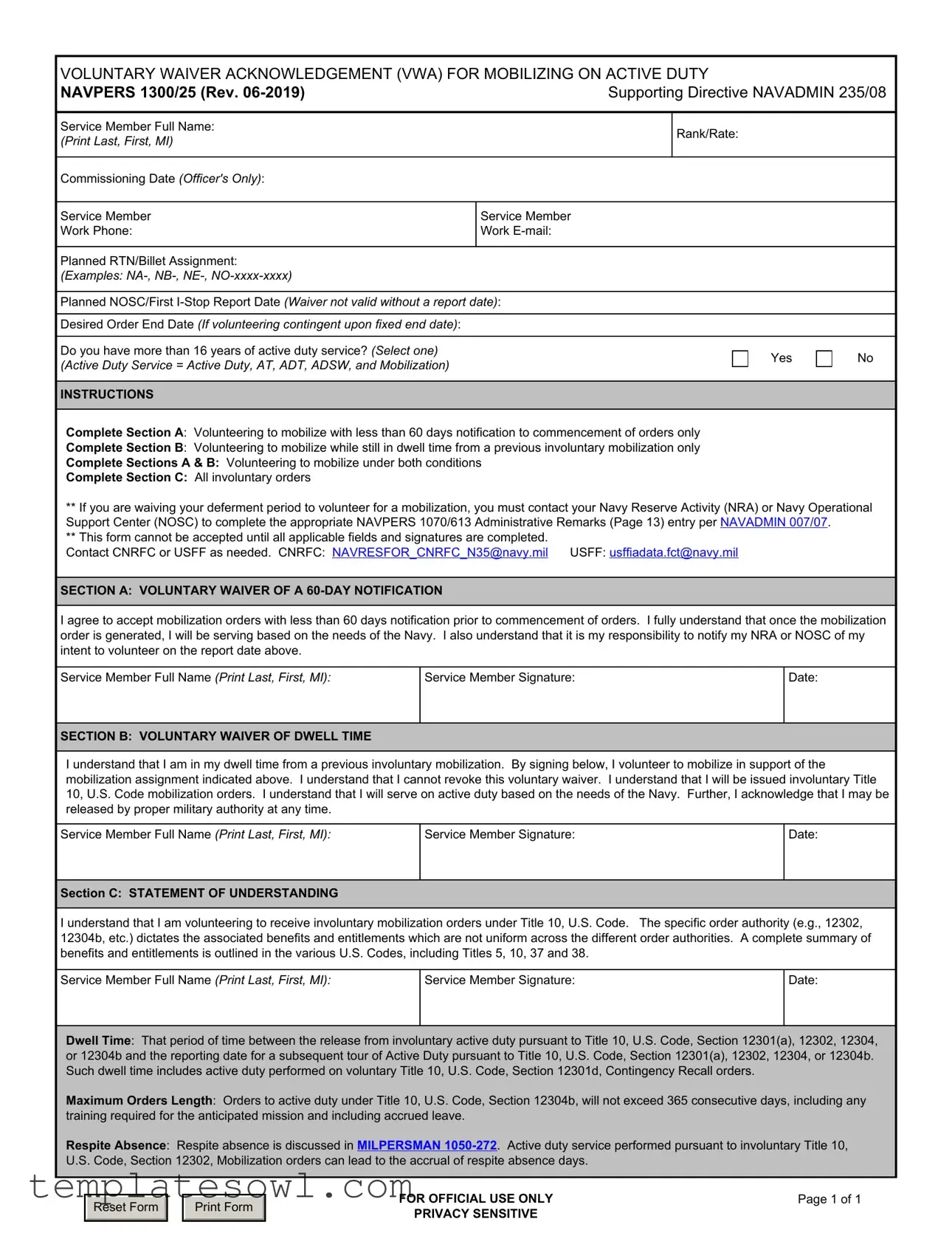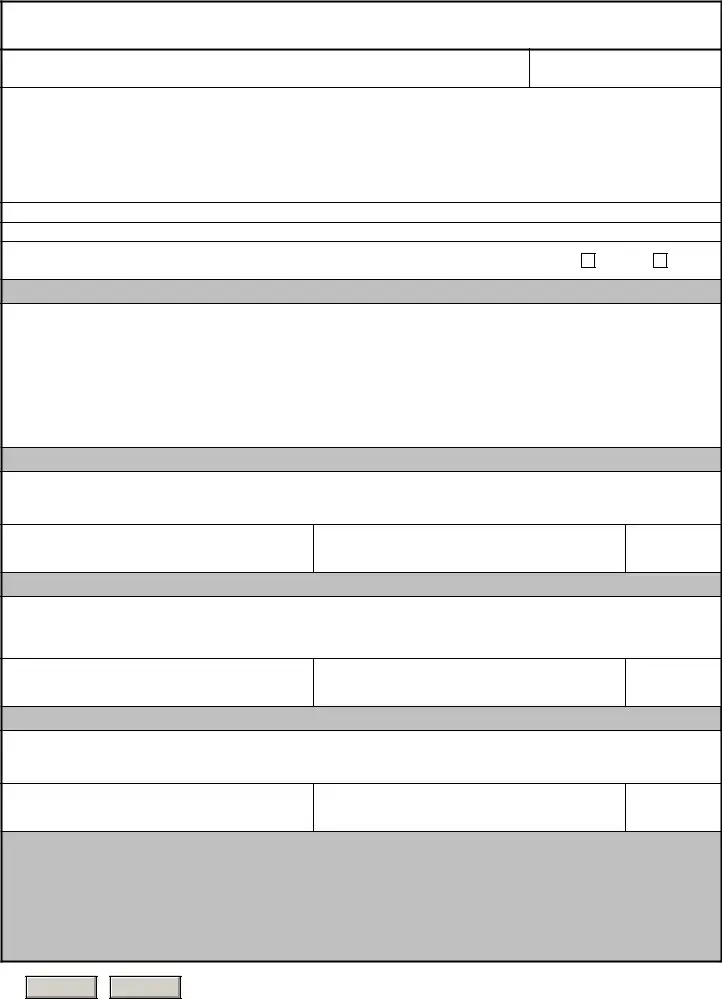What is the Navy Mobilizing VWA form?
The Navy Mobilizing Voluntary Waiver Acknowledgment (VWA) form, also known as NAVPERS 1300/25, is a document that service members complete to volunteer for mobilization with the Navy. It allows individuals to acknowledge their understanding of the terms and implications of mobilizing, particularly with less than 60 days of notification or while still within dwell time from a previous mobilization.
Who should fill out the VWA form?
Any service member who wishes to volunteer for mobilization in the Navy must complete the VWA form. This includes those who are willing to accept mobilization orders with short notice or who are currently in their dwell time following a previous involuntary mobilization.
What information is required on the VWA form?
The form requires personal information such as the service member's full name, rank/rate, commissioning date (for officers), work phone, work email, planned return or billet assignment, planned reporting date, and a desired order end date if applicable. Additionally, individuals must indicate if they have more than 16 years of active duty service.
What are the sections of the VWA form?
The VWA form has three main sections: Section A for waiving the 60-day notification requirement, Section B for waiving dwell time, and Section C for an understanding of involuntary orders under Title 10, U.S. Code. Service members must complete the relevant sections based on their circumstances.
Is the VWA form valid without a report date?
No, the VWA form is not valid without a planned reporting date. This is essential for the waiver to be accepted. It is the service member’s responsibility to ensure all applicable fields are completed before submission.
Can a service member revoke their waiver after signing?
Once signed, a service member cannot revoke their voluntary waiver. This applies to both Sections A and B, indicating the service member's commitment to proceed under the specified conditions.
What should a service member do after completing the VWA form?
After completing the VWA form, the service member should notify their Navy Reserve Activity (NRA) or Navy Operational Support Center (NOSC) of their intent to volunteer. This is important for the proper documentation of their administrative remarks.
What happens if the form is incomplete?
If any applicable fields or signatures are missing, the form cannot be accepted. It is crucial for service members to review their form thoroughly to ensure completeness and accuracy.
How can service members get help regarding the VWA form?
For assistance, service members can contact the Commander, Navy Reserve Forces Command (CNRFC) or U.S. Fleet Forces Command (USFF) at the provided email addresses. They can provide additional guidance regarding the completion and submission of the VWA form.

